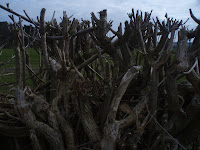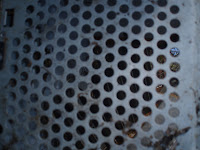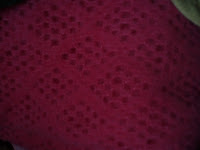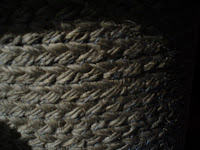Thursday, 2 June 2011
Sunday, 29 May 2011
Monday, 2 May 2011
I have included a link to my Children's Story based in Hong Kong:
http://issuu.com/alice.hair/docs/diego
http://issuu.com/alice.hair/docs/diego
Saturday, 23 April 2011
Tuesday, 5 April 2011
Sunday, 3 April 2011
Wednesday, 30 March 2011
As part of my research into pattern I looked at the Timorous Beastie's website. This is a design company set up by Alistair McAuley and Paul Simmons. They are noted for their 'surreal and provocative textiles and wallpapers'. I think their designs are beautiful and they will definately influence my pattern design ideas.
Tuesday, 29 March 2011
Chinese(?) Willow Pattern
The Willow pattern, more commonly known as Blue Willow, is a distinctive and elaborate pattern used on ceramic kitchen/housewares. The pattern was designed by Thomas Minton around 1790 and has been in use for over 200 years.
No one knows the exact origin of the Willow legend. Some say the Willow pattern legend was invented in England over 200 years ago to promote pottery sales of Minton's original willow pattern derived from an older Chinese design. According to some, the original Chinese pattern Minton based his design on had no bridge with people on it, leading to doubt as to whether the stories connected with it came from China or England. Others say the legend was told in China more than a thousand years ago and brought to Europe from Eastern lands by the Crusaders.
The Chinese History: Willow plates are said to be a pictorial way in which members of the illegal Hung Society defied the Manchu rulers, whom they characterized as invading tyrants. Members of this illegal secret society celebrated their dead whom they called martyrs and reminded Hung members of their pledge to defend what they called Chinese and Buddhist values.
It is claimed that the Manchus destroyed all the original Willow Pattern plates. The design was supposedly smuggled into England in the 18th Century and reintroduced back into China in the 19th Century. Commercial production of the Willow Pattern is made by Famille Rose porcelain.
The Romantic Fable: Once there was a wealthy Mandarin, who had a beautiful daughter (Koong-se). She had fallen in love with her father's humble accounting assistant (Chang), angering her father (it was inappropriate for them to marry due to their difference in social class). He dismissed the young man and built a high fence around his house to keep the lovers apart. The Mandarin was planning for his daughter to marry a powerful Duke. The Duke arrived by boat to claim his bride, bearing a box of jewels as a gift. The wedding was to take place on the day the blossom fell from the willow tree.
On the eve of the daughter's wedding to the Duke, the young accountant, disguised as a servant, slipped into the palace unnoticed. As the lovers escaped with the jewels, the alarm was raised. They ran over a bridge, chased by the Mandarin, whip in hand. They eventually escaped on the Duke's ship to the safety of a secluded island, where they lived happily for years. But one day, the Duke learned of their refuge. Hungry for revenge, he sent soldiers, who captured the lovers and put them to death. The Gods, moved by their plight, transformed the lovers into a pair of doves (possibly a later addition to the tale, since the birds do not appear on the earliest willow pattern plates).
The Secret Shaolin Message: The Shaolin Monastery is burned by the Imperial troops of the Manchu rulers, called invaders by Chinese nationalist and later communist factions. Souls of the dead monks take a boat to the isle of the Blest. On the bridge are three Buddha awaiting the dead souls: Sakyamuni, the Buddha of the Past; Maitreya, the Buddha of the Future; and, Amitabha, the Ruler of the Western Paradise. Beyond them is the City of Willows – Buddhist Heaven. The doves are the monks' souls on the journey from human to immortal life.
The teller narrates the tale while pointing to various designs on the plate.
A Chinese vessel, sailing by.
A bridge with three men, sometimes four,
A willow tree, hanging o'er.
A Chinese temple, there it stands,
Built upon the river sands.
An apple tree, with apples on,
A crooked fence to end my song.
Pattern photography..
Pattern can be found anywhere, I have taken some photographs of patterns which I have seen over the past week, I have also cropped some older photos to show some interesting patterns:
Subscribe to:
Comments (Atom)




















































































































































